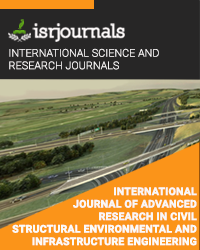a detailed study on facility management and its contribution to the construction industry
E.Jemimah,A.Leema rose
Published in International Journal of Advanced Research in Civil,Structural,Environmental and Infrastructure Engineering and Developing
ISSN: 2320-723X Impact Factor:1.7 Volume:1 Issue:3 Year: 08 April,2014 Pages:74-81

Abstract
In a changing real estate environment, intensity of competition has increased, new production and organization structures, new technologies and concepts of work result in new requirements for real estate which result in pressure on the cost forces of companies to exhaust all saving capacities. Hence professional facilities management will emerge as a pre-requisite to sustain profitable business prospects. Facility management has been employed because of the necessity to decrease overheads cost and unnecessary waste. In Real estate environment, developers will have to tie up with providers of such services to ensure a better selling price for their properties. On the other hand, corporates will continue to avail of the benefits of outsourcing facilities management services for their office spaces to enhance their overall image and brand value. Various organizations like MNCs, developers, banks, hospitals, etc., are employing the services of a professional service provider. In fact, developers tie up with an FMA prior to the completion of the project to facilitate marketing. This also helps prospective tenants to estimate their facilities management costs and thus arrive at gross rentals. This paper focuses on this new niche sector within real estate that is fast developing shape, the concepts and theory of facility management and the need and viability of the same are explained at a length. Also focuses on design, maintenance and operations phase of the services in the public buildings.
Kewords
Facility management, services, business management model, finance.
Reference
[1]. Alan Park (1998), “Facilities Management: An explanation”, 2nd edn, Macmillan Press Ltd., London. [2]. Ada Scupola (2012), “Managerial Perception of Service Innovation in Facility”, Journal of Facilities Management, Vol.10, No.3, pp 198 – 211. [3]. Alessandro Ancarani, Guido Capaldo and Tatiana Allegra (2006), “Supporting Facilities Management of Public Procurement: A Multi-criteria Approach to Sourcing Strategies in Health Sector”, International Public Procurement Conference Proceedings, 21-23 September 2006. [4]. Angela Lewis, David Riley, Abbas Elmualim (2010), “Defining High Performance Buildings for Operations and Maintenance”, IJFM, Vol.1, No.2, November. [5]. Barret.P (1995), “Facilities Management: Towards Best practice”, 2nd edn, Blackwell science Ltd., England. [6]. Connors, Phill (1995), “Innovation and Innovative process in Facility Management Organisations”, 2nd edn, Blackwell science Ltd., England. [7]. Dr. (Mrs.) Ihuoma P. Asiabaka (2008), “Need for Effective Facility Management in Schools in Nigeria”, New York Science Journal, Vol.1, No.2, pp 10-21. [8]. Hackman Hon Yin Lee, David Scott (2008), “Strategic and Operational Factors’ Influence on the Management of Building Maintenance Operation Processes in Sports and Leisure Facilities”, Hong Kong, IJFM, Vol.8, No.1, pp 25-37. [9]. John McGee (2012), “Atlanta Botanical Gardens - Sustainability Case Study”, IJFM, Vol.3, No.1, March. [10]. Martin Pickard (2011), “Facility Management and Facility Equipment”, white paper, February. [11]. Michael Pitt, Marjolein van Werven, Samantha Price (2011), “The Developing Use of Strategic Alliances in Facilities Management”, Journal of Retail and Leisure Property, vol.9, pp 380-390. [12]. Quah Lee Kiang (2008), “Facilities Management & Maintenance”, 3rd edn, Mc. Graw Hill Ltd, Mumbai. [13]. Robert E. Johnson & Mark J. Clayton (1998), “Information Technology: Best practices of Facility Management Organisations” 2nd edn, Macmillan Press Ltd., London. [14]. Susanne Balslev Nielsen (2012), “The Strategic Facilities Management Organisation in Housing: Implications for Sustainable Facilities Management”, IJFM, Vol.3, No.1, March. [15]. Zairul N. Musa, Michael Pitt (2009), “Defining facilities management service delivery in UK shopping centres”, JRLP, Vol.8, pp 193-205.

